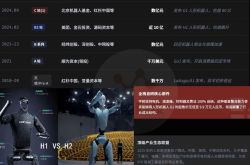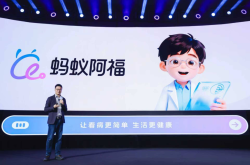Tencent Fully Opens Up AI Capabilities, Aiming to Let Everyone 'Hop On Board'?
![]() 09/22 2025
09/22 2025
![]() 525
525
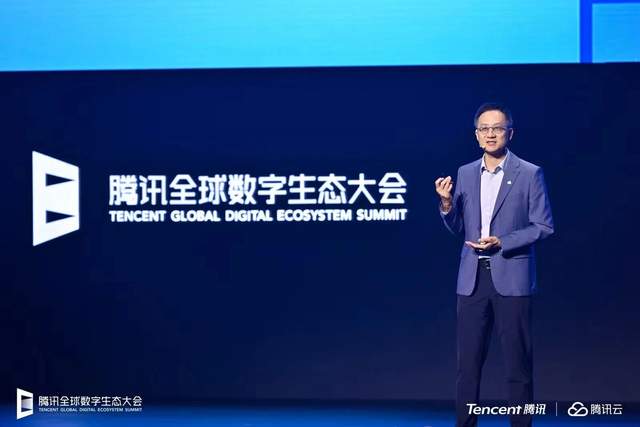
Has the Era of AI Inclusivity Arrived?
Still worried about the high barriers to AI? Watching others' businesses soar on the AI rocket while you hesitate due to 'computing power assassins' and complex technologies? Feeling like an outsider in the AI era?
Don't worry. A turning point has arrived.
On September 16, 2025, at the Tencent Global Digital Ecosystem Summit held in Shenzhen, Tencent officially announced the full opening of its AI capabilities. AI is no longer just Tencent's internal 'secret weapon.' Instead, it is comprehensively releasing everything from underlying large models and development platforms to application scenarios and computing power infrastructure to all industries.
Practicality trumps flashiness, and implementation outweighs concepts. At this summit, Tencent Cloud released the 'Intelligent Agent Panoramic Strategy' roadmap, introducing new products such as the ADP 3.0 Intelligent Agent Development Platform, Agent Runtime environment, and Hunyuan 3D 3.0 model. It emphasized 'application-oriented approaches,' enabling AI to truly move towards scenario-based implementation.
These moves signify that Tencent aims not only to make AI a shiny label in concepts but also to turn it into an engine driving production efficiency, industrial upgrading, and international expansion.
However, the question remains: How much benefit can this large-scale openness and popularization bring? Will ordinary enterprises or developers encounter more pitfalls than expected after 'hopping on board'? Is the AI inclusivity path paved by Tencent truly a broad and smooth road?
Comprehensive Openness from 'Brain' to 'Toolbox'
Within Tencent's newly unveiled Hunyuan system, model upgrades are particularly eye-catching. Hunyuan 3D 3.0 is not just a 'new version.' It introduces the 3D-DiT hierarchical sculpting model, tripling modeling precision with a geometric resolution of up to 1536³, supporting ultra-high-definition 3D model generation of approximately 3.6 billion voxels. This means creators can achieve finer results when producing complex scenes, game models, or film, television, and animation special effects.
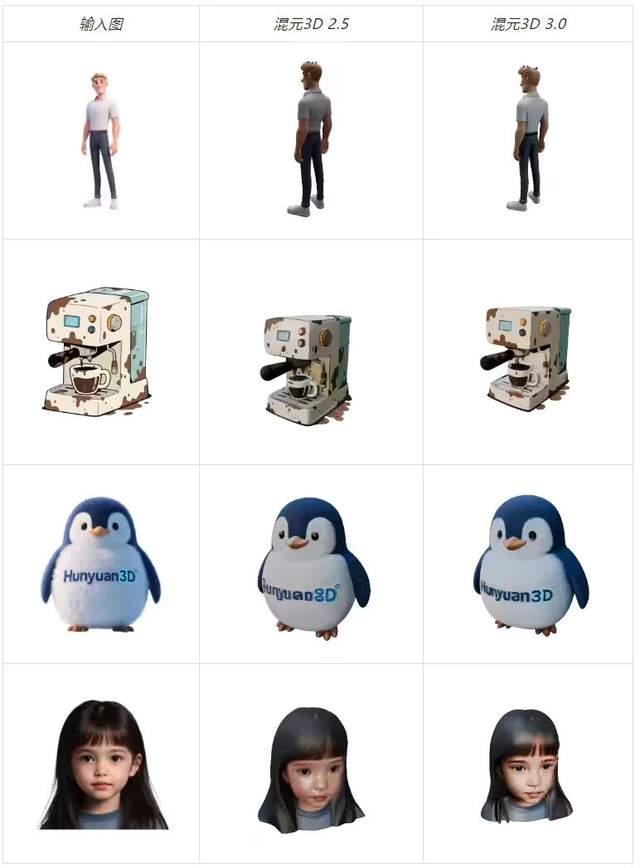
Moreover, the pipeline of Hunyuan 3D Studio has been reconstructed: Seven core processes, including component generation, UV unfolding, color, material, and lighting rendering, have been upgraded to meet professional standards. These capabilities are not limited to internal use or a select few but are freely available to users and accessible to developers via APIs, making it easier for industries like film, television, gaming, and industrial design to acquire these 'creative weapons.'
On the platform side, Tencent Cloud's Intelligent Agent Development Platform ADP 3.0 serves as a crucial hub. ADP 3.0 supports multiple frameworks, such as LLM + RAG (Large Language Model plus Retrieval-Augmented Generation), Workflow (workflow-based automation), and Multi-Agent (multi-agent collaborative work).
This means enterprises can build AI intelligent assistants tailored to their data and business processes without starting from scratch. In other words, it's not just providing a 'model' but an entire toolbox usable in actual production.
Additionally, the infrastructure-level support of 'Agent Runtime,' including modules like execution engines, cloud sandboxes, gateways, context management, and observability, enables intelligent agents to be deployed securely and efficiently in cloud environments.
The cloud sandbox can start as fast as 100 milliseconds and supports the concurrent operation of hundreds of thousands of intelligent agent instances, which is crucial for businesses sensitive to response speed, such as customer service Q&A, real-time recommendations, and automated replies.
At the model level, Tencent does not pursue the route of 'stacking parameters and comparing scale' but emphasizes practicality and implementation.
Its 'Hunyuan Large Model' focuses on multimodality and industry applications rather than blindly pursuing 'the largest.' It also offers lightweight enterprise-grade large model services, allowing SMEs to access AI capabilities at a lower cost.
Arguably, Tencent is more like building a 'neural network,' letting AI permeate every aspect of business rather than isolating it in a single massive 'brain.' While this approach may not easily generate buzz, it aligns more with Tencent's long-term genes as a connectivity-focused company.
According to Tianyancha data, China currently has over 4.243 million existing AI-related enterprises, with over 500,000 newly registered in 2024 alone. With Tencent's full opening of AI capabilities, the registration of AI enterprises may accelerate further.
Domestic Computing Power Becomes a New Trump Card
Amid 'computing power anxiety' becoming an industry pain point, Tencent has played another trump card: full adaptation to domestic chips.
Models and platforms represent 'upper-level' capabilities, but without computing power and infrastructure, many capabilities can only remain in PowerPoint presentations and laboratories. This is a crucial aspect emphasized in Tencent's strategy: adapting to mainstream domestic chips, full-stack software-hardware collaboration, and infrastructure internationalization.
Tencent Cloud announced at the summit that its platform has integrated hardware resources from multiple domestic AI chip manufacturers, including Ascend, Cambrian, and Enflame, through heterogeneous computing capabilities. This enhances efficiency and reduces costs when deploying or inferring models on these chips.
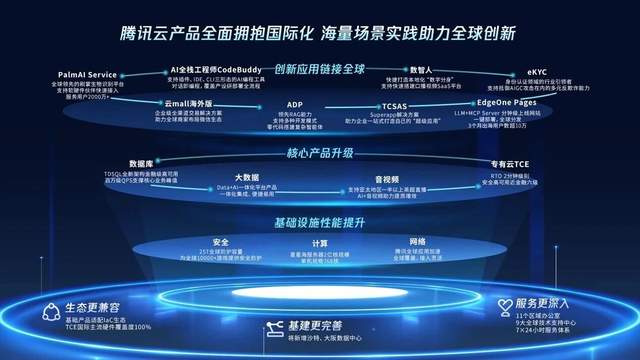
This way, SMEs do not have to rely on imported GPUs and can find more cost-effective and reliable alternatives among domestic hardware options.
Computing power startup speed has also significantly improved, with the Agent Runtime's cloud sandbox achieving a startup delay as fast as 100 milliseconds. This means intelligent agents can almost respond in real-time in scenarios requiring fast responses, such as user interactions, customer service, and recommendation systems, significantly enhancing user experience.
Large-scale concurrent support is also critical because if a platform can support hundreds of thousands of intelligent agent instances running simultaneously, it means enterprises can handle large-scale user access or automated processing tasks.
Tencent's internal applications have also demonstrated the power of 'domestic computing power + infrastructure.' For example, the CodeBuddy tool has seen extremely high internal usage, reducing coding time by approximately 40%.
Many efficiency improvements are no longer just concepts but bring tangible savings.
At the computing power level, through software-hardware collaborative optimization, key metrics such as inference cost, energy consumption, and response delay on domestic chips are approaching or even surpassing traditional imported solutions in some scenarios.
However, this 'domestic computing power + infrastructure' path is not without challenges. Domestic chips still lag behind some international top products in hardware-level performance metrics like high-density computing, video memory, interconnection bandwidth, and high-speed communication interfaces.
Ecosystem compatibility issues also exist, with inconsistent software-hardware interfaces, drivers, and toolchain standards among different chip manufacturers, potentially leading to additional debugging costs for developers during migration or hybrid deployment.
Moreover, adaptation and integration require significant investment. Success is not just about 'plugging in' the chips but ensuring long-term stability and responsiveness. Building this 'domestic Great Wall' to be not only tall but also sturdy and breathable is no small feat for Tencent.
Where Are the Dividends of AI Inclusivity?
Tencent is not just showing off by rolling out so many models, tools, and computing power but hopes to stimulate tangible returns like industrial upgrading, efficiency improvements, and enhanced user experiences. Where are the dividends of AI inclusivity?
First, for many SMEs and traditional industries, there is now a genuine opportunity to 'hop on board.' Previously, if an enterprise wanted to use AI effectively, it required significant investment in computing power or hiring technical teams, along with self-training and optimization.
Now, through ADP 3.0 or Hunyuan 3D's APIs or tools, these capabilities can be partially outsourced or accessed as services.
Tools like knowledge management, automated customer service Q&A, content generation, and meeting minutes have become easier to integrate. For example, the AI minutes feature in 'Tencent Meeting' has seen a 150% year-on-year increase in usage, while the accuracy rate of the Lexiang knowledge base Q&A has reached 92%.
These figures indicate that AI-driven efficiency improvements in routine office work and communication collaboration are no longer distant visions. For many enterprises, such efficiency gains can translate into cost savings, faster responses, and quicker product-to-market times.
Second, for ordinary users, AI's 'companionship' and convenience are increasing. For instance, in content creation, after the openness of the Hunyuan 3D series models, the quality of image/3D generation has significantly improved, allowing many designers and small teams to produce visual effects previously achievable only by large teams at a lower cost.
Tools like Yuanbao and Tencent Electronic Signature continuously enhance intelligent interaction and automation levels, reducing friction in daily administrative tasks and contract signing. Users may not necessarily realize 'how much AI is doing behind the scenes,' but their experience is gradually improving.
However, the dividends are not guaranteed. Despite lowered barriers for SMEs, many 'hidden costs' remain, such as data preparation, model customization, security and privacy protection, and operational support. These aspects often require significant time and effort, and enterprises may not have sufficient talent or budget.
Especially in highly niche industries or scenarios demanding extreme precision and reliability, off-the-shelf open models or tools may still require substantial secondary development and tuning.
Moreover, efficiency improvements mean some jobs become automated, potentially impacting job roles and industry structures. Who will bear the costs of these 'replacements'? Additionally, if these AI capabilities are concentrated mainly in the hands of Tencent and its ecosystem partners, with SMEs merely acting as consumers, the dividends will still flow more to top enterprises.
If the pricing structure is complex and opaque, the so-called 'inclusivity' may be just a facade. For example, an enterprise might initially find it 'cheap to use,' but costs can rapidly escalate as scale increases, concurrency rises, or customization needs grow, leading to heavier burdens.
Tencent's openness of AI capabilities this time may mark a crucial turning point for China's AI implementation to enter the fast lane, signaling that 'AI is no longer just for top enterprises to showcase their strength.'
However, the 'practicality' of models and platforms needs time to validate, computing power infrastructure must pass stability and international compliance tests, and whether the dividends can truly benefit SMEs and ordinary users remains key.
If you are an entrepreneur, product manager, creative professional, or an ordinary AI user, now is indeed a good time to 'hop on board.' Tencent is making bold and steady moves, but whether it can become a truly broad and smooth path for entrepreneurs remains to be tested by time and the market.





